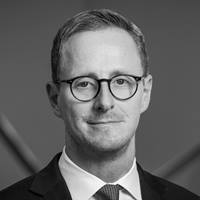SCROLL DOWN TO WATCH RECORDING
The critical role that data has to play in the age of ESG and sustainable finance was the focus of Capco’s second global webinar “Delivering a Greener Future through Better Data”, hosted in conjunction with international law firm Simmons & Simmons. The event brought together a panel of distinguished industry experts to explore the current imperatives and realities, including current data gaps, firms’ ability to align and comply with regulatory targets, and emerging strategies for sourcing ESG-related data.
With banks, asset managers and insurance companies set to find themselves increasingly obliged to commit to a broad range of analyses, reporting, disclosures and publications to validate their own green credentials and meet the expectations of regulators, stakeholders and clients, they will need to surface and aggregate information in a more detailed and comprehensive fashion than ever before. Too often, however, the necessary data – whether relating to assets that are traded or financed, to companies within supply chains, or to firms’ own clients – is incomplete, contradictory or even non-existent.
In his introductory remarks, Dr. Olaf Clemens, Global ESG Lead at Capco, reflected on the recently concluded COP26 conference in Glasgow and the leading role that the financial services industry has to play in driving forward the transformation of the global economy. In addition, he noted the growing recognition among banks that climate and environmental risks will have a material impact on their respective risk profiles over the next three to five years.
“To play this role successfully, one question dominates all the meetings we are having with our clients from the financial services industry globally – what about the required data?” Olaf said. “Where do I get the data to manage risks arising from E, S and G or report on ESG data, such as the Greenhouse Gas Emissions of a client? Which ESG ratings are available for counterparties I’m working with – and can I rely upon them?”
Dr. Harald Glander, Partner at Simmons & Simmons, echoed these sentiments. “We have been advising our asset management clients on ESG regulation for over two years now,” Harald noted, “and a reoccurring theme is the accessibility and trustworthiness of data that is required to enable the asset managers to fulfil the new disclosure requirements.”
The panel discussion opened with remarks from Paul Dickinson, Founder Chair of CDP, UK a not-for-profit charity that runs a global disclosure system for investors, companies, cities, states and regions to manage their environmental impacts. Paul drew a comparison between the “very serious government response” to COVID-19 and the parallel governmental response – or failed response – to climate change. “Citizens, investors and governments are being exposed to ever larger amounts of risk but no one is doing much about it,” said Paul.
“There is no world government – the COP is more like a world court – so we need to make our own weather here. Through the Glasgow Financial Alliance for Net Zero (GFANZ) we have asset managers/owners accounting for US$130 trillion that are committed to net zero, we have more than 1,000 companies with accredited science based targets, trillions of dollars of capital, plus NGOs and scientists. They ¬– and we – are going to have to use that influence to require from governments really strong new laws that cut emissions fast, all over the industrial world.”
Compliance with and enforcement of such new laws will require better data, and more of it. Anita George, Executive Vice President at Caisse de dépôt et placement du Québec (CDPQ), India noted that in the area of environmental emissions and energy intensity– the ‘E’ of ESG – progress has been made around data and measurement, but significant challenges remain when it comes to the ‘S’ and ‘G’ aspects. “These are equally important, so it will be very interesting to see what the Sustainability Standards Board and other groups come up with regarding the ‘S’ and the ‘G’,” Anita said. “We have taken a view at CDPQ that we will define these measures as best we can and then keep refining them and have started with listed companies. There is more of a challenge currently with data availability for private companies. But while we can create our own standards and measures, there is a power in collective action, so we are now working 14 other institutional investors with circa USD9 trillion under management to collectively create metrics – and hence better data – for the ‘S’ and ‘G’.”
Data quality – or a lack of it – is a central preoccupation for the industry, but reflecting on the challenges that exist when attempting to assess ESG across different industries, Claudia Morrow, Senior Vice President of Corporate Development and Strategy at Vistra Corp., USA suggested that the issue is not necessarily just a matter of poor data. “Rather, within the framework used by some of the providers, including GRI, SASB, and TCFD, some of the questions may not be relevant to all industries, or questions are being asked in a way that is difficult to answer,” Claudia said.
“So it comes back to looking at data that is very factual but which at the same time can be used or interpreted differently depending on the industry being reported on. That is certainly a big challenge for us when we are working with the financial services industry and are looking to provide information to our investors and answer those questions in a way that makes sense.”
While recognizing the need for consistent, high-quality data, Markus Mueller, Managing Director, Global Head of Chief Investment Office, Deutsche Bank, Germany struck a warning note. “We began with a small number of data providers, which in time became a plethora of data providers,” Markus noted. “Now we have started to see mergers and sector consolidation, which is the usual progression. Given we have all advocated for greater standardization [of data sources], I would envision there will be more structure when it comes to data providers down the road. But the other side of that is that there is a risk of losing knowledge attached to that standardization. The niche players are very important because they are putting data and facts in front of us which may have otherwise been forgotten or neglected.”
The panel also touched upon the biggest data priorities for 2022. Vistra’s Claudia Morrow highlighted “more consistent requirements for ‘S’ reporting”, adding that within Vistra itself better execution of data gathering and reporting for those S components was a focus. CDPQ’s Anita George stressed the need for urgency: “We must act now, and leaders – whether of organizations or governments – need to be vocal in that call to action, and that is when we will see things start to move,” she said.
This need for broad spectrum engagement was echoed by CDP’s Paul Dickinson. “Everyone must recognize that if we wait for governments to make the data meaningful, nothing will happen,” Paul said. “So we have to take responsibility for pushing to get price on carbon, taxation, regulation, standardization – and when we do that, the data will become super valuable. However, it should also not be ignored that if you are looking at putting in new generating capacity, for instance, we already have renewables that are cheaper than coal – and that data is already available today to inform your decision.”
Deutsche Bank’s Markus Mueller stressed the pressing need to flesh out the 15 sub-categories related to the Scope 3 emissions – emissions that, in the words of the US Environmental Protection Agency, “are the result of activities from assets not owned or controlled by the reporting organization, but that the organization indirectly impacts in its value chain”. Scope 3 is the hardest of the emission categories to quantify, and this is compounded by the ambiguity of the subcategories. Clarity and transparency on these will help the transparency of the emissions number, and to allow for greater tracking and tangible reduction activity.
As Markus also noted, Ernest Hemingway’s line in his novel ‘The Sun Also Rises’, where a character explains how he went bankrupt – “gradually, then suddenly” – is highly salient to the damaging progression of climate change, and should serve as a warning against complacency and inaction.
Missed the event? Watch recording here:


